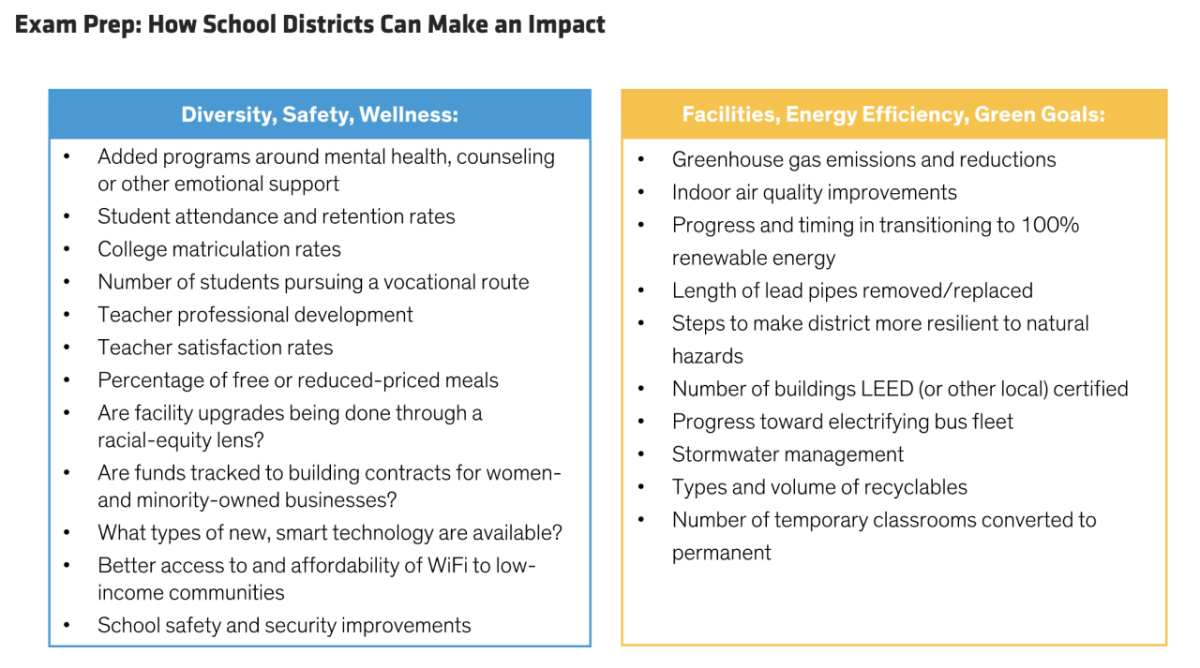AllianceBernstein: How Muni Impact Investors Can Help Issuers Ace Their ESG Tests
The degree of success of muni bonds that lift communities often stems from showing issuers how they’ll be graded.
There’s no substitute for studying hard. But when the subject is expansive, it also helps to know what you’ll be graded on. Issuers of municipal bonds intended to help their communities are often at this crossroad: raising their hands to lend support but less certain on which approach to take, given the many possibilities.
Engagement Helps Set a Course for Impact
Proceeds from such muni bonds are typically used for specific purposes, helping move the needle on community-based social and environmental initiatives. The bonds should have clearly stated goals, like replacing lead water pipes, broadening mental healthcare access or funding school breakfast programs.
Determining the muni bond’s focus is only half the work, however, since investors also expect results. And not all such bonds work as advertised. The more transparent issuers fill out their report cards, using key performance indicators (KPIs) to help track progress and measure actual impact.
The need for support across communities continues to grow, expanding the potential scope of muni bonds that can help. More prospective issuers are on board, too, and are often open to suggestions on how to get started. This is where active investor engagement* adds a lot of value—examining options, determining purpose, setting expectations. With a clearer understanding of these, issuers can derive not just where to focus but likely how well they’ll meet investors’ ESG expectations.
Schools Are an Open Book of Impact Potential
Local school districts are a good example of engagement’s important contribution to the bond issuance and investment process. Most districts are struggling with helping students make meaningful progress, and with fewer teachers and shrinking revenues.
In practically every major city, district children seek mentors, classrooms lack supplies, and facilities need repairs, but resources are beyond stretched. For instance, the average age of school buildings is 70 years, with some surpassing 100.
This leaves the door open to a lot of impact bond projects that can make a difference, whether by providing new computers, stronger math and science curriculum, ensuring safer drinking water and stronger support networks for educators. In fact, data shows that improving school facilities and their general surroundings leads directly to significantly better long-term outcomes for students.
As school districts weigh their options, we help them consider key ESG projects or goals and define KPIs that would enable them to gauge progress for each (Display). Many districts share common problems, so some metrics are universal, but we also propose KPIs that target specific local challenges.
An environmental-impact focus, for instance, could fund projects to improve classroom energy consumption, air quality or stormwater management. Impact KPIs in this instance would track reduction in greenhouse gas emissions, subdivided by source, or document the types and volume of waste avoided or recycled.
School district muni bonds can have a social tilt too. For example, a construction project to retrofit a school cafeteria into a LEED-certified facility could commit and document support for local workforce diversity initiatives. Social impact metrics here would be whether the issuer set and met inclusion targets for women- and minority-owned enterprises among their contractors.
Students, of course, are the whole point, and metrics should paint a holistic picture of how well the issuer is educating them. Better grades and attendance are only part of the learning experience today and are more often just an extension of how connected, cared for, and safe our children feel in their schools.
Impact Metrics Vary by Focus Area
School districts by themselves offer a diverse ecology of community- or service-focused muni bonds and how investors measure results. Other focus areas, such as healthcare, energy and mass transit, also present impact metrics distinct to them, and we research and advise issuers accordingly.
For example, the number of Medicaid- and charity-funded cases and readmission rates are relevant hospital KPIs, while the percentage of low-income ridership and avoided carbon emissions are telling data for transportation- and energy-related muni bonds, respectively.
Municipal bond investors have a spectrum of responsible investing strategies at their disposal, from ESG integration to sustainable investing. For many, impact investing is a clear path to making a difference close to home. It also offers exciting opportunities for engagement, helping issuers sharpen their focus and improving overall outcomes for both communities and investors.
*AB engages companies where it believes the engagement is in the best interest of its clients.
The views expressed herein do not constitute research, investment advice or trade recommendations and do not necessarily represent the views of all AB portfolio-management teams. Views are subject to change over time.
Learn more about AB’s approach to responsibility here.



